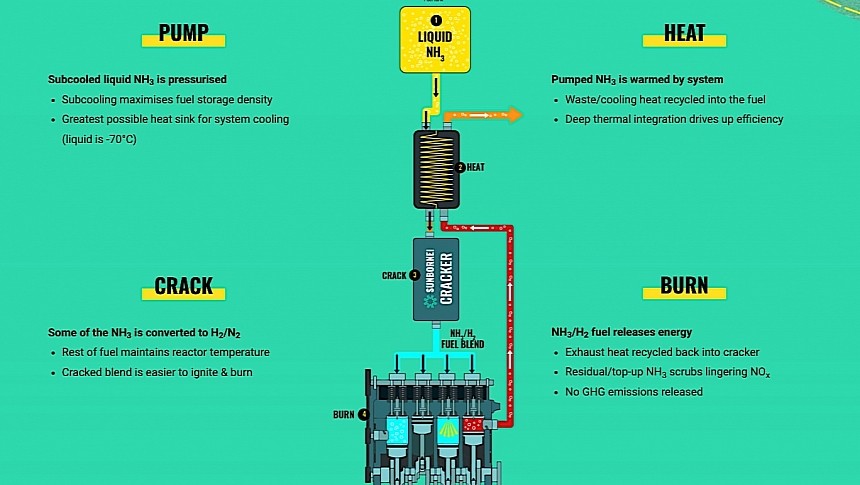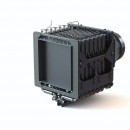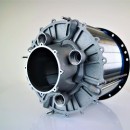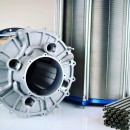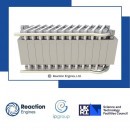The society we've built is one that can never function without fuel. Somehow, the humans of long ago found out that fossil fuels are the most effective for their immediate purposes, and settled on that. In doing so, they kind of doomed our planet.
Chances are we're probably past the point the damage we've done to the planet over the last hundred years can be reversed. But we can at least try to limit it, and the only way to do that is to keep society running by using alternative, greener fuels.
There are several such solutions on the table at the moment. Most companies in the transportation and energy sectors focus on electric power. Others, on biofuels and even hydrogen. A handful are looking at ammonia with hope in their eyes.
Chemically, ammonia is a gas compound of nitrogen and hydrogen. It doesn't smell pretty, but it's godsent to farming, as it's used as fertilizer. It can also be found in cleaning products and pharmaceuticals. And, if a company goes by the name Sunborne Systems, it'll probably soon be a commonplace source for the fuel in our tanks as well.
The Brits, an offshoot of a company called Reaction Engines, are working on a way to transform ammonia into the fuel of the future. Not necessarily for the cars we drive, but mostly for the heavy transport sector, and possibly even for power generation.
The tech Sunborne is developing is essentially a reactor that transforms liquid ammonia into a blend of hydrogen, nitrogen, and uncracked ammonia, which then can be used to power, for instance, propulsions systems in transport ships, or energy generators. The use of the fuel resulting from ammonia would result in no harmful emissions.
To prove the point, the company ran a test on a reactor prototype that could be just enough to power a family car. During the test, enough fuel blend was produced to power a 75-hp internal combustion engine, proving the merits of the idea.
The reactor concept could be scaled to serve the needs of much larger pieces of machinery, especially the ones used in heavy transport, some of the world's largest polluters.
The main image of this piece shows how the reactor is supposed to work. The super-cold ammonia, stored in a fuel tank, is pressurized and pumped into a heat exchanger to be warmed up.
Then, a piece of tech called a cracker splits some of the ammonia into hydrogen and nitrogen, while the rest of the initial fuel helps keep the reactor running. The company says the cracked blend achieved this way is easier to ignite and burn.
The burn stage is last, taking place in a combustion engine in the way that's so known these days. The burn process results in no greenhouse gas emissions.
The British company does not say when it expects the reactor to be ready for another test, let alone when we're to expect the first real-life application of the system.
There are several such solutions on the table at the moment. Most companies in the transportation and energy sectors focus on electric power. Others, on biofuels and even hydrogen. A handful are looking at ammonia with hope in their eyes.
Chemically, ammonia is a gas compound of nitrogen and hydrogen. It doesn't smell pretty, but it's godsent to farming, as it's used as fertilizer. It can also be found in cleaning products and pharmaceuticals. And, if a company goes by the name Sunborne Systems, it'll probably soon be a commonplace source for the fuel in our tanks as well.
The Brits, an offshoot of a company called Reaction Engines, are working on a way to transform ammonia into the fuel of the future. Not necessarily for the cars we drive, but mostly for the heavy transport sector, and possibly even for power generation.
The tech Sunborne is developing is essentially a reactor that transforms liquid ammonia into a blend of hydrogen, nitrogen, and uncracked ammonia, which then can be used to power, for instance, propulsions systems in transport ships, or energy generators. The use of the fuel resulting from ammonia would result in no harmful emissions.
To prove the point, the company ran a test on a reactor prototype that could be just enough to power a family car. During the test, enough fuel blend was produced to power a 75-hp internal combustion engine, proving the merits of the idea.
The reactor concept could be scaled to serve the needs of much larger pieces of machinery, especially the ones used in heavy transport, some of the world's largest polluters.
The main image of this piece shows how the reactor is supposed to work. The super-cold ammonia, stored in a fuel tank, is pressurized and pumped into a heat exchanger to be warmed up.
Then, a piece of tech called a cracker splits some of the ammonia into hydrogen and nitrogen, while the rest of the initial fuel helps keep the reactor running. The company says the cracked blend achieved this way is easier to ignite and burn.
The burn stage is last, taking place in a combustion engine in the way that's so known these days. The burn process results in no greenhouse gas emissions.
The British company does not say when it expects the reactor to be ready for another test, let alone when we're to expect the first real-life application of the system.
